What are your chances of acceptance?
Calculate for all schools, your chance of acceptance.

Your chancing factors
Extracurriculars.
Why Your 9th Grader Should Practice Essay Writing Now
Whether or not your high schooler enjoys writing, it’s a skill she’ll need to master. As you probably know, writing is something your student will be doing throughout high school—and the rest of her life. So, how can you help her practice and master the art of essay writing now—and why does she need to start early? Read on to find out.
Writing is an essential skill your student will need throughout high school and college.
In college, your student will be doing a lot of writing. While she may not be writing at a college level now, it’s not too early to start developing the skills she will need then, since her instructor will expect her to have mastered at least the basics.
Read How to Prepare for College-Level Writing in High School for advice.
But writing isn’t just something your student will need to do in college. She’ll also need to do it in high school. She should start getting into the habit of working on crafting formal essays now so she won’t have to learn as many new skills later.
It will gear your teen up for the SAT.
The SAT has a Writing and Language section. Plus, if your child chooses to complete the SAT Essay (or ACT Writing) , she’ll need to learn how to compose a structured essay and make a solid argument for the test.
Gaining practice with essay writing prepares your high schooler for standardized test writing since she’ll have experience developing ideas and brainstorming quickly.
It will get your high schooler’s ideas flowing for the college essay.
How your student says it is more important than what she says. Practicing now will allow her to learn how to develop ideas, use rhetorical devices, and learn language nuances. Check out How to Write an Impressive College Essay: A Step-by-Step Guide for tips on crafting a stellar essay.
Your student will also learn how to “speak” to her audience , avoid cliches, and write according to her audience’s needs.

Discover your chances at hundreds of schools
Our free chancing engine takes into account your history, background, test scores, and extracurricular activities to show you your real chances of admission—and how to improve them.
It will build and provide an outlet for creativity.
Writing is an important tool for self-expression. It’s probably not news to you that teens have angst, and it can be helpful to let out their feelings on paper. Your student doesn’t need to limit her writing to formal essays, either; journaling, creative writing, and blogging can also serve as outlets. Read 10 Easy Ways to Help Your Teen Become a Better Writer for more ideas.
If your high schooler is passionate about writing as an art, check out Creative Writing Opportunities for High School Students to find out about activities and programs to help her hone her talent.
It will prepare your student for the real world.
Writing is necessary for nearly every career . Even if your student isn’t planning on going into a humanities field, she’ll still need strong writing skills for tasks like emails, reports, and general daily communication.
If your student does want to pursue a career in the humanities, she will need writing even more. (Be sure to check out 15 Surprising Career Opportunities for Potential Humanities Majors for career-path ideas.)
Why Writing Matters
Writing is one of the most important skills your child will need throughout her life—from high school into her career. That’s why it’s imperative for her to start mastering it now. Encourage your student to write both inside and outside of school. There are plenty of outlets beyond formal essay writing to help her hone her craft. Who knows? She may even find that it’s her calling.
Want help with your college essays to improve your admissions chances? Sign up for your free CollegeVine account and get access to our essay guides and courses. You can also get your essay peer-reviewed and improve your own writing skills by reviewing other students’ essays.
Related CollegeVine Blog Posts

- AI Essay Grader
Advertisement
Hide all ads with premium or pro membership., premium membership.
With a premium membership, you unlock access to an almost limitless amount of essay gradings. You can either print your graded essays straight away or save them as PDFs for future reference. Plus, all of your graded essays are neatly stored, making them readily accessible whenever you need them. Finally, you can grade up to 10 essays simultaneously.
Premium Essay Grader
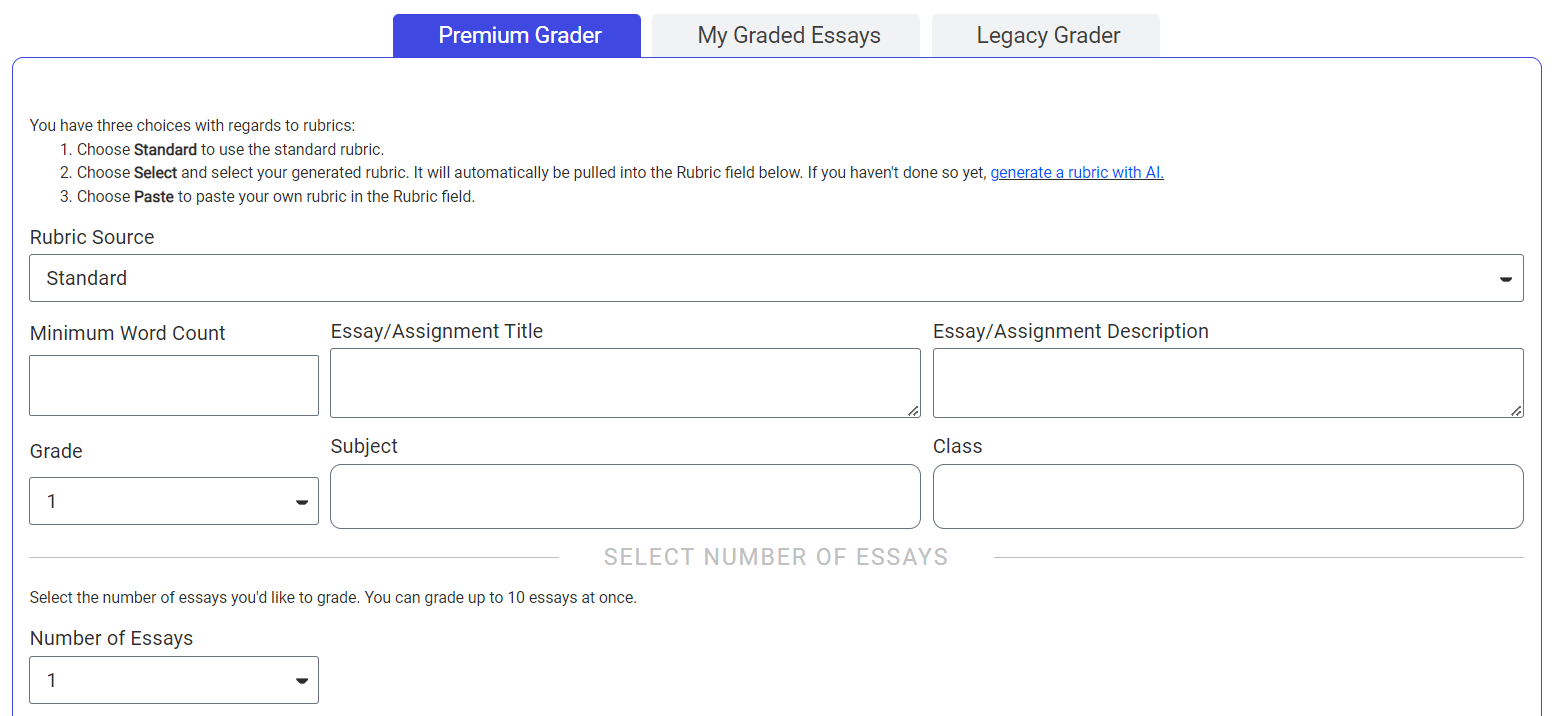
Sample AI Graded Essay

About Our AI Essay Grader
Welcome to the future of education assessment with ClassX’s AI Essay Grader! In an era defined by technological advancements, educators are constantly seeking innovative ways to streamline their tasks while maintaining the quality of education. ClassX’s AI Essay Grader is a revolutionary tool designed to significantly alleviate the burden on teachers, offering a seamless and efficient solution to evaluate students’ essays.
Traditionally, assessing essays has been a time-consuming process, requiring educators to meticulously read through each piece of writing, analyze its content, and apply complex rubrics to assign grades. With the advent of AI, however, the landscape of education evaluation is rapidly changing. ClassX’s AI Essay Grader empowers teachers by automating the grading process without compromising on accuracy or fairness.
The concept is elegantly simple: teachers input or copy the students’ essays into the provided text box, select the appropriate grade level and subject, and ClassX’s AI Essay Grader takes it from there. Leveraging the cutting-edge technology of ChatGPT, the AI system meticulously evaluates essays against a predefined rubric. The rubric encompasses various criteria, ranging from content depth and structure to grammar and style, ensuring a comprehensive assessment of the writing.
| Criteria | Score 4 | Score 3 | Score 2 | Score 1 |
| Organization | Writing has a clear introduction, body, and conclusion with appropriate use of paragraphs. | Writing has a clear introduction and conclusion but may have some inconsistencies in paragraphing. | Writing has some attempt at organization but lacks a clear introduction, body, or conclusion. | Writing is disorganized and lacks clear structure. |
| Content | Writing includes relevant details, facts, or examples that support the main idea. | Writing includes some relevant details, facts, or examples, but may lack consistency or specificity. | Writing includes limited or unrelated details, facts, or examples. | Writing lacks relevant content or is off-topic. |
| Grammar and Mechanics | Writing demonstrates correct use of punctuation, capitalization, and verb tense. | Writing has some errors in punctuation, capitalization, or verb tense, but does not significantly impact readability. | Writing has frequent errors in punctuation, capitalization, or verb tense that may impact readability. | Writing has pervasive errors in punctuation, capitalization, or verb tense that significantly impact readability. |
| Vocabulary | Writing uses a variety of age-appropriate vocabulary with precise word choices. | Writing uses some age-appropriate vocabulary but may lack variety or precision. | Writing uses limited or basic vocabulary that may not be age-appropriate. | Writing lacks appropriate vocabulary or word choices. |
| Overall Impression | Writing is engaging, well-crafted, and demonstrates strong effort and creativity. | Writing is generally engaging and shows effort, but may have some areas for improvement. | Writing is somewhat engaging but lacks polish or effort. | Writing is not engaging, poorly crafted, or lacks effort. |
Teachers can now allocate more time to personalized instruction, classroom engagement, and curriculum development, rather than being bogged down by the time-consuming task of manual essay evaluation. The AI’s rapid and consistent grading also means that students receive prompt feedback on their work, enabling them to learn from their mistakes and improve their writing skills at an accelerated pace.
Moreover, the AI Essay Grader enhances objectivity in grading. By removing potential biases and inconsistencies inherent in manual grading, educators can ensure that every student receives a fair and unbiased evaluation of their work. This contributes to a more equitable educational environment where all students have an equal chance to succeed.
In summary, ClassX’s AI Essay Grader represents a groundbreaking leap in the evolution of educational assessment. By seamlessly integrating advanced AI technology with the art of teaching, this tool unburdens educators from the arduous task of essay grading, while maintaining the highest standards of accuracy and fairness. As we embrace the potential of AI in education, ClassX is leading the way in revolutionizing the classroom experience for both teachers and students.
Share this tool
- Categories: AI Tools , AI Tools for Teachers , Assessments and Grading
- Keywords: essay , essay grade , grade essay , grading
Privacy Overview
| Cookie | Duration | Description |
|---|---|---|
| cookielawinfo-checkbox-analytics | 11 months | This cookie is set by GDPR Cookie Consent plugin. The cookie is used to store the user consent for the cookies in the category "Analytics". |
| cookielawinfo-checkbox-functional | 11 months | The cookie is set by GDPR cookie consent to record the user consent for the cookies in the category "Functional". |
| cookielawinfo-checkbox-necessary | 11 months | This cookie is set by GDPR Cookie Consent plugin. The cookies is used to store the user consent for the cookies in the category "Necessary". |
| cookielawinfo-checkbox-others | 11 months | This cookie is set by GDPR Cookie Consent plugin. The cookie is used to store the user consent for the cookies in the category "Other. |
| cookielawinfo-checkbox-performance | 11 months | This cookie is set by GDPR Cookie Consent plugin. The cookie is used to store the user consent for the cookies in the category "Performance". |
| viewed_cookie_policy | 11 months | The cookie is set by the GDPR Cookie Consent plugin and is used to store whether or not user has consented to the use of cookies. It does not store any personal data. |
- Learn the Alphabet
- Children's Music
- Video Lessons
AI CONVERSATIONS
- AI Homework & Project Helper
- Interview a Historical Figure
- AI Conversation Practice
- AI Book Chat
- AI Country Guide
AI TOOLS FOR STUDENTS
- AI Dictionary
- AI Thesaurus
- AI Sentence Generator
- AI Grammar Correction
- AI Paraphraser
- AI Summarizer
- AI Lyrics Generator
- AI Poem Generator
- AI Ancient Text Translator
- AI Children's Story Generator
- Role-Play Game: Fantasy Quest
- AI Figure of Speech Generators
AI TOOLS FOR TEACHERS
- AI Rubric Generator
- AI Prompt Optimizer
- AI Lesson Creator
- AI Lesson Plan Creator
- AI Multiple-Choice Quiz Creator
- AI True-False Quiz Creator
- AI Fill-in-the-Blanks Quiz Creator
- AI Book Quiz Creator
- AI Report Card Comments
- AI Comments for English Teachers
- IEP Generator
- AI Homework Helper

Suggestions
Suggest an ai tool or improvements to an existing one., create a free account free membership.

Create a free account on ClassX to enjoy all the benefits we have to offer.
Reading Worksheets, Spelling, Grammar, Comprehension, Lesson Plans
9th - 10th Grade Writing
For ninth and tenth graders, this Common Core area helps students gain mastery of writing skills by working collaboratively and producing written texts, understanding syntax and vocabulary, and organizing their ideas. Among the complete standards for this grade, ninth and tenth graders will be asked to: support the claims of their arguments with evidence, valid reasoning, and credible sources and support it with an understand of relationships between claims and an understanding of the audience, use a formal style when writing within the norms and claims of the discipline, be able to develop the topic of a work with details, facts, definitions, and quotations, employ formatting, graphics, and multimedia to present information in the written medium, develop a writing topic with relevant facts, definitions, and concrete details, go through the process of writing, editing and revision for their written work with attention to purpose and audience, use appropriate technology to publish writing and to collaborate on written projects with use of linking technology to demonstrate correlations between sources or related material, demonstrate keyboarding skill, go through the process of writing, editing and revision for their written work, conduct short research projects to answer a question, begin to understand the relationship of material to their source work such as the way that Shakespeare might draw on themes from Ovid, quote or paraphrase the data and conclusions of supporting texts while avoiding plagiarism and using proper citation, use evidence from literary or informational texts to support analysis, reflection, and research.
How to Write a Thesis Statement
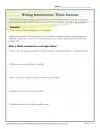
This activity helps students develop a strong thesis statement for their essays by providing practice writing sample statements.
How to Write an Introduction: Bridge Building Activity
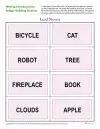
This activity is designed to help students learn about writing introductions through a fun bridge building activity to join the lead noun card and thesis statement card.
How to Write an Introduction: Different Leads
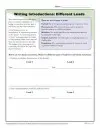
This is a fun, creative activity where students explore ways to include factoids, stories, metaphors and more to create “hooks”. A great activity to help students develop strong introductions.
How to Write an Introduction: Lead Types
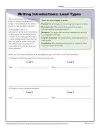
Creating an attention-grabbing lead isn’t always easy but it’s very rewarding to students when they are able to create engaging introductions. This activity provides great practice to build better introductions!
How to Write an Introduction: Lead, Bridge, and Thesis
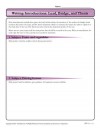
Let’s combine it all! This activity helps students use thesis statements, bridges and leads to write strong essay introductions.
How to Write an Introduction: Write a Complete Introduction
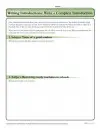
This activity helps students bring together what they’ve learned to write a complete introduction, including the lead, bridge, and thesis statement.
Main Idea Graphic Organizer
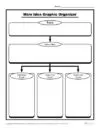
Staying organized can be difficult, especially when you are trying to keep your writing and ideas well organized. With this printable Main Idea Graphic Organizer, students can keep their thoughts and ideas organized and separated based on their order of importance.
Organize the Main Idea
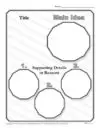
Help your students learn how to better organize their ideas with this Main Idea Organizer. Students will be asked to come up with a title, write a main idea, and support the main idea with three written details. In order to excel at writing, it is important to learn how to construct paragraphs in a way that is easy for the reader to understand the argument.
Paragraph: Proofing and Editing
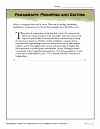
Use this “Printable Writing Worksheet” to help get in the routine of proofing and editing.
Write a Conclusion: Voting
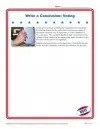
A strongly written conclusion can sway a reader one way or another. When writing persuasive articles it is important that you restate your thesis and give strong supporting ideas. The conclusion is the last chance you will have to sway your readers. This free printable worksheet is perfect for students to practice writing conclusions.
Mr Salles Teaches English
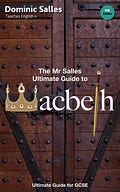
Grade 9 Essay: How does Shakespeare present the theme of ambition in the play?
What is the shortest essay which can get full marks.

I’m writing a guide to how to write essays at each grade for Macbeth. My Ultimate Guide to Macbeth shows you how to understand the whole play, scene by scene, to above grade 9. It also shows you how to write about each scene at grades 6, 7, 8, 9 and beyond grade 9.
I’ve written over 20 guides and it is the best guide I have ever written.
But, what if you are a student who just wants a grade 5, or just wants a grade 7, or you want a grade 9, but you want it as quickly as possible. You don’t want to read an Ultimate Guide to Macbeth - that’s going to have a lot of Mr Salles brilliance in it but, no offence Mr Salles, English isn’t even in my top 5 subjects.
I want the maximum marks, with the minimum effort.
So, that’s why I’m writing a series of new guides, showing you ‘just’ what you need for each grade, and no more.
How I wrote the essays in the essay writing guide (out in September)
I found all the essays I could which had been marked by a senior examiner.
I rewrote them, changing all the words, but keeping every idea and technique, and every quote.
Then I counted the features of each essay. Exam criteria are vague and open to interpretation. So I wondered, are there features of each essay I can count, which are not open to interpretation? And then, if we do count these features, will they predict the right mark?
Let’s find out.
This is an extract from the guide. Normally, my comments, and the examiner comments, follow the essay. Here, I have put the comments first so you can see what the examiner is looking for before you read the essay.
Response 24
Thesis Statement Yes Explanations 9 Quotes 5 Named Methods 5 Society/era/patriarchal/Jacobean/contemporary/ historical reference etc 3 Shakespeare 4 Exploratory Could, Might, May, Perhaps, Probably 0 Conclusion Yes Paragraphs 7
My Comments
Well, well, well. I was not expecting that mark. (It scored 25/30).
It doesn’t have anywhere near the number of references or quotations I was expecting for AO1.
It introduces the idea that ambition will affect ‘reason’, but never actually proves it –there are many easy examples and quotes revealing the mental state of Macbeth – is this a dagger, murdered sleep, never shake they gory locks, my mind is full of scorpions etc - and Lady Macbeth sleepwalking. The original essay included mistakes in identifying adverbs and nouns, which I’ve got rid of, because even naming them correctly adds no marks. There is very little context used to back up interpretations.
So, what has impressed the examiner?
There are both a thesis statement and a conclusion, so it becomes a well-constructed argument. The student has quoted from the end of the play right at the beginning, to show that they are dealing with the whole text. Although they don’t give many examples from the rest of the play, they do move through it chronologically, so it is a well-constructed argument. This, and very specific language to describe it, helps the student look at Macbeth’s character arc, his ‘journey’, showing how Macbeth changes. The answer looks at the structure of the play in two ways. First by viewing Macbeth’s life in two parts – a rise and fall. Secondly, by exploring Banquo as the antithesis to Macbeth in his ambition. These two ideas mark the answer out as thoughtful and different from most students’ essays.
Examiner Comments
The answer focuses on ambition right from the start and with every point. The thesis statement and next paragraph make it clear that the student is dealing with the whole text. The essay is thoughtful and developed. The student embeds quotations and references to illustrate their ideas. The student’s comments about Shakespeare’s intentions throughout the essay show that they realise his choices are deliberate. In order to get into level 6 the student should explore more of Shakespeare’s ideas.
Write down the other ideas you could put into this essay.
Find references or quotes to back these up.
Write another 350 words to add in to get 30/30.
Thank you for reading Mr Salles Teaches English. I want every student to be able to go up by several grades. Please share this post to help me reach that goal.
The 420 Word Essay!
Shakespeare reveals ambition as the dominant theme in the play, because it is Macbeth’s overpowering ambition which leads to his immoral murder of King Duncan. Lady Macbeth and the witches can only influence Macbeth in this because his ambition is already so great.
In this extract, Shakespeare explores how ambition influences even the most honourable. This is why he gives Lady Macbeth the perspective that Macbeth’s character is “ too full o’th’ milk of human kindness ”, which is her real perception because Shakespeare reveals it in SOLILOQUY. We associate “ milk ” with innocence and purity, which implies that Macbeth is too noble to act on his ambition. Yet, once he has reigned as king, he is viewed as a “ butcher ”, because he has become both cruel and indiscriminate in his killing.
This change from excessive kindness to tyranny is a surprising journey, which warns the audience of the danger of ambition. Moreover, Shakespeare portrays ambition as a force which will overcome morality and reason. He gives Lady Macbeth the view that Macbeth is “ not without ambition, but without the illness should attend it ”. The COMPARISON of ambition to “ illness ” implies that it is destructive, and also that this destruction can turn on the ambitious person themselves, attacking their sense of morality and ability to be kind.
Macbeth lists every reason not to murder Duncan, before focusing on his “ vaulting ambition ”. This METAPHOR implies that his ambition is more powerful than his conscience, so he will overcome his moral objections.
Paid subscribers get a grade 9 exam answer every week, with examiner comments. There are over 40 already published, to which paid subscribers get full access.
The rest of the answer is below the line.
Keep reading with a 7-day free trial
Subscribe to Mr Salles Teaches English to keep reading this post and get 7 days of free access to the full post archives.
- Skip to main content
- Skip to secondary menu
- Skip to primary sidebar
- Skip to footer
A Plus Topper
Improve your Grades

Class 9 Essay Topics | Interesting Essay Writing Topics & Ideas for 9th Grade
May 2, 2023 by Veerendra
Get inspired with great narratives and Class 9 Essay Topics. Avail the Grade Specific Essay Writing Topics curated belonging to different categories. Bring up the Creative Mind and Imagination in you by referring to the 9th Standard Essay Topics. Enhance your Vocabulary with the Grade 9 Essay Writing Topics & Ideas and express your thoughts into essays on your own. 9th Std Essays are beneficial to win prizes in your competitions or speeches.
Essay Topics List for Grade 9 Students & Children
Not everyone can express their views in the form of Essays. Try to read the Class 9th Essays belonging to diverse categories. All of them are given in an efficient manner and you can access the Grade 9 Essay Topics of different subjects via quick links available. The 9th Standard Essay Topics prevailing encourages self-study among kids and gives a fair idea on what to write on several topics.
- Essay on School’s Surroundings and Examinations
- Essay on Festivals
- Essay on Persons We Come Across
- Essay on About Myself
- Essay on Relationships
- Essay on Visits
- Essay on Scenes, Sights, and Journeys
- Essay on Health and Fitness
- Essay on Personalities/People
- Essay on Events
- Essay on Monuments
- Essay on Vacation/Holidays
- Nature Essay
- Essay on Sports
- Essay on Cities
- Essay on Life
- Essay on Animals
- General Essays
- Global Warming
- Essay on Environmental Issues & Awareness
- Essay Topics Based on Proverbs
- Essay on Moral Values
- Education Essay
- Essay on India
- Essay on Science & Technology
- Essay on Social Issues & Social Awareness
- Argumentative Essay Topics
FAQs on 9th Class Essay Writing Topics & Ideas
1. Where do I get Subject Specific 9th Standard Essay Topics?
You can get Subject Specific 9th Standard Essay Topics on our page.
2. How to access Grade 9 Essay Writing Topics & Ideas?
All you need to do is simply tap on the quick links available to access Class 9th Essay Writing Topics & Ideas.
3. Is there any website that provides the 9th Class Essay Suggestions free of cost?
Aplustopper.com is a trusted portal that provides the 9th Class Essay Suggestions free of cost on our page.
Hoping the knowledge shared regarding the 9th Std Essay Topics has helped you a lot. Do leave us your suggestions via the comment section and we will look into them and add them at the earliest. Stay in touch with our site to avail latest updates on Essays of Different Classes.
- Picture Dictionary
- English Speech
- English Slogans
- English Letter Writing
- English Essay Writing
- English Textbook Answers
- Types of Certificates
- ICSE Solutions
- Selina ICSE Solutions
- ML Aggarwal Solutions
- HSSLive Plus One
- HSSLive Plus Two
- Kerala SSLC
- Distance Education

Miss Huttlestone's GCSE English
Because a whole class of wonderful minds are better than just one!
‘Macbeth’ Grade 9 Example Response
Grade 9 – full mark – ‘Macbeth’ response
Starting with this extract (from act 1 scene 7), how does Shakespeare present the relationship between Macbeth and Lady Macbeth?
In Shakespeare’s eponymous tragedy ‘Macbeth’, Macbeth and Lady Macbeth’s relationship is a complex portrait of love, illustrating layers of utter devotion alongside overwhelming resentment. Though the couple begins the play unnaturally strong within their marriage, this seems to act as an early warning of their imminent and inevitable fall from grace, ending the play in an almost entirely different relationship than the one they began the play with.
In the exposition of the play, Macbeth and Lady Macbeth initially appear immensely strong within their marriage, with Macbeth describing his wife as ‘my dearest partner of greatness’ in act 1 scene 5. The emotive superlative adjective ‘dearest’ is a term of endearment, and acts as a clear depiction of how valued Lady Macbeth is by her husband. Secondly, the noun ‘partner’ creates a sense of sincere equality which, as equality within marriage would have been unusual in the Jacobean era, illustrates to a contemporary audience the positive aspects of their relationship. Furthermore the lexical choice ‘greatness’ may connote ambition, and as they are ‘partner(s)’, Shakespeare suggests that Macbeth and Lady Macbeth are equal in their desire for power and control, further confirming their compatibility but potentially hinting that said compatibility will serve as the couple’s hamartia.
However, the strength of Macbeth and Lady Macbeth’s relationship falls into a rapid downward spiral in the subsequent scenes, as a struggle for power within the marriage ensues. This is evidenced when Macbeth, in act 1 scene 7, uses the declarative statement ‘we will proceed no further in this business’. Here, Macbeth seems to exude masculinity, embracing his gender role and dictating both his and his wife’s decisions. The negation ‘no’ clearly indicates his alleged definitive attitude. However, Lady Macbeth refuses to accept her husband’s rule, stating ‘when you durst do it, then you were a man’. She attempts to emasculate him to see their plan through. The verb ‘durst’ illustrates the risk taking behaviour that Lady Macbeth is encouraging; implying an element of toxicity within their relationship, and her harsh speech makes the cracks in their relationship further visible to the audience. It is also probable that a contemporary audience would be made severely uncomfortable in the presence of Lady Macbeth’s unapologetic display of power, and it is possible that Shakespeare attempts to paint Lady Macbeth as the villain of the play, playing upon the audience’s pre-determined fears of feminine power. Though Lady Macbeth appears to be acting entirely out of self-interest, another reader may argue that she influences her husband so heavily to commit the heinous act of regicide, as she believes that he crown may as a substitute for the child or children that Shakespeare suggests she and Macbeth have lost previously, and in turn better Macbeth’s life and bring him to the same happiness that came with the child, except in another form.
As the play progresses, Shakespeare creates more and more distance between the characters, portraying the breakdown of their relationship as gradual within the play but rapid in the overall sense of time on stage. For example, Lady Macbeth requests a servant ‘say to the king’ Lady Macbeth ‘would attend his leisure/ for a few words’. Here she is reduced to the status of someone far lesser than the king, having to request to speak to her own husband. It could be interpreted that, now as king, Macbeth holds himself above all else, even his wife, perhaps due to the belief of the divine right of kings. The use of the title rather than his name plainly indicated the lack of closeness Lady Macbeth now feels with Macbeth and intensely emotionally separates them. This same idea is referenced as Shakespeare develops the characters to almost juxtapose each other in their experiences after the murder of Duncan. For example, Macbeth seems to be trapped in a permanent day, after ‘Macbeth does murder sleep’ and his guilt and paranoia render him unable to rest. In contrast, Lady Macbeth takes on an oppositional path, suffering sleepwalking and unable to wake from her nightmare; repeating the phrase ‘to bed. To bed’ as if trapped in a never-ending night. This illustrates to the audience the extreme transformation Macbeth and Lady Macbeth’s relationship undergoes, and how differently they end up experiencing the aftermath of regicide.
In conclusion, Macbeth and Lady Macbeth begin the play almost too comfortable within their marriage, which seems to invite the presence of chaos and tragedy into their relationship. Their moral compositions are opposing one another, which leads to the distancing and total breakdown of their once successful marriage and thus serves as a warning to the audience about the effects of murder, and what the deadly sin of greed can do to a person and a marriage.

Share this:
Published by.
gcseenglishwithmisshuttlestone
Secondary English teacher in Herts. View all posts by gcseenglishwithmisshuttlestone
9 thoughts on “‘Macbeth’ Grade 9 Example Response”
wheres the context
Like Liked by 1 person
It is also probable that a contemporary audience would be made severely uncomfortable in the presence of Lady Macbeth’s unapologetic display of power, and it is possible that Shakespeare attempts to paint Lady Macbeth as the villain of the play, playing upon the audience’s pre-determined fears of feminine power.
Also ref to ‘divine right of kings’
Thank you! This is a brilliant response. Just what I needed. Could you also please include the extract in the question.
We will proceed no further in this business. He hath honored me of late, and I have bought Golden opinions from all sorts of people, Which would be worn now in their newest gloss, Not cast aside so soon.
—> until end of scene
She did (Act 1 Scene 7)
Another great resource for grade 9 Macbeth analysis https://youtu.be/bGzLDRX71bs
In order to get a grade 9 for a piece like this would you need to include a wide range of vocabulary or could you write the same thing ‘dumbed down’ and get a 9.
If the ideas were as strong then yes, but your writing must AT LEAST be ‘clear’ for a grade 6 or above.
This is really great, I’m in Year 10 doing my Mock on Thursday, a great point that i have found (because I also take history) Is the depiction of women throughout the play, during the Elizabethan era, (before the Jacobean era) many people had a changed view of women as Queen Elizabeth was such a powerful woman, glimpses of this have been shown in Jacobean plays, in this case Macbeth, Lady Macbeth is depicted as powerful although she had to be killed of to please King James (as he was a misogynist) women are also depicted as evil in the play, such as the three witches, I also found that the Witches are in three which could be a mockery to the Holy Trinity.
Leave a comment Cancel reply

- Already have a WordPress.com account? Log in now.
- Subscribe Subscribed
- Copy shortlink
- Report this content
- View post in Reader
- Manage subscriptions
- Collapse this bar

13 Must-Read Short Stories for 9th Graders
Jul 16, 2022
Making the shift from middle school to high school can be a challenge for 9th graders and for the teachers of those 9th graders! But stacking your short stories for 9th graders with selections from Edgar Allan Poe, Ray Bradbury, Langston Hughes, Roald Dahl, etc. is an easy decision. With such short stories for 9th graders in your short story unit, students will experience amazing literature that sparks their interest, makes them gasp in surprise, rolls their eyes with what really is delight, and ultimately gives them an experience of literature that sets them up for success as they continue through high school.
This post aims to make your life easier with 13 suggested short stories for 9th graders that are brimming with opportunities for learning throughout this entire year!
Need help with Test Prep? Check out this FREE Pack of 3 Test Prep Activities to help students achieve success on standardized tests!
Table of Contents
What makes a good short story?
Much like beauty, the definition of a good short story is in the eye of the beholder. The beholders, in this case, are you and your students! But taking into account the following six criteria will help you, as the teacher, to make decisions about short stories for 9th graders.
- Plot – The inclusion of some plot twists is engagement gold! They will push students to read a bit more deeply, challenge their preconceptions, and develop their current skill set with comprehension and fundamental literacy skills.
- Theme – Choosing stories with a relatable theme – an overall message – is good but not required. However, the theme can make or break a story. In 9th grade, choosing stories with a strong theme will help to establish a solid foundation of understanding for this concept.
- Characters – Characters can also make or break a story for students. A character with little dimension is less than ideal for interest and analysis. Choosing stories that students have something to dive into for the protagonist and even an antagonist is optimal.
- Connections to Audience – A good short story will engage the reader, and nothing speaks more to a student than something they can connect with in fiction. These connections are often personal, but some can be universal such as the experiences of friendship, growing up, or even family dynamics. A good short story becomes one where students might see themselves or their experiences but even more than that will allow them to consider their experiences in a different way.
- Connections to World – Beyond making personal connections, being able to connect stories to explain our lives is also important. And, more and more, we rely on stories to help to explain our world. Finding a story that resonates with students and with the big ideas of the world provides a chance for important thinking and discussion.
- Writer’s Craft – There is something to be said for appreciating the creative art and style of a short story. Looking at plot structure, word choice, character development, and more provides students with mentor texts for their own work. This doesn’t just mean their creative writing; rather, students can use lessons about sentence types, verb conjugation, and more to aid with their paragraphs, reports, or essays.
Need back-to-school ideas? Click below for help with making the start of the year stress-free!

Selecting good short stories for 9th graders can be a mix of these six criteria, but in the end, it’s a matter of finding what will meet the needs, wants, and interests of your students.
This list of 13 short stories for 9th graders is sure to help you find what you need for your students this year. We want good literature because it offers options for analysis and skills development too!
- The Tell-Tale Heart – Edgar Allan Poe’s classic of a character being haunted by his actions through a metaphorical heartbeat will hook students. Adding in the analysis of character and imagery is the reason this is a must-teach! Check out the bundle of activities to go with this story!
- Thank you, Ma’am – Langston Hughes’ story is one where the greater good wins out to change the course of a young man’s life. With its two-character focus, this story is ideal for character analysis and comparison. Get your copy of the full lessons here in digital and print .
- The Pedestrian – Ray Bradbury’s dystopian story set in 2131 features a man who walks the city while everyone else watches television. This seems like a simple premise, but when the man encounters the police and declares he’s a writer, the values of society are revealed. With its social commentary that remains poignant in our times, this story is a good one to explore theme. It also provides opportunities for text-to-world connections and discussion. Check out the full lessons done for you !
- The Veldt – Another of Bradbury’s science fiction short stories, this one defies all expectations with a virtual reality simulation gone quite wrong… or right depending on the point of view! To teach this story with an added focus on character and the symbolism of the title and setting, check out this bundle .
- The Gift of the Magi – O. Henry’s heartwarming story focuses on a young couple’s sacrifices to give each other meaningful holiday gifts. This story is a good choice for theme and big ideas as well as close reading and literary analysis with repetition, allusion, and irony. Check out all of the lessons for this story .
- The Necklace – Guy de Maupassant’s story of riches to rags and letting go of one’s pride provides such a marvelous twist at the end that this is a must-teach! For lessons with close reading and textual analysis with a focus on character, setting, and theme grab this bundle that’s all ready for you!
- The Most Dangerous Game – This story by Richard Connell is about a hunter of humans rather than animals. This story will ensure students understand unexpected plotlines with comprehension quizzes, tracking story elements, and writing about the effectiveness of one key aspect. You can find complete lessons with teacher answers here .
- The Scarlet Ibis – James Hurst tells the tragic story of a young boy nicknamed Doodle from the point of view of Doodle’s unnamed brother. This heart-wrenching story with a focus on flashbacks and foreshadowing will encourage students to examine the structure and infer the order of the story. Check out this easy-to-use bundle .
- Lamb to the Slaughter – A horror story with a side of comedy, Roald Dahl’s classic is a great option for close reading and character analysis. Get your copy of the lessons here .
- After Twenty Years – Two friends follow different life paths but plan to meet up in 20 years; however, their meeting goes awry with a delightful twist! This story by O. Henry can help students to break down the plot into chunks so they better understand character and action. Get the bundle of lessons here .
- The Monkey’s Paw – This story is best summarized as be careful what you wish for! The protagonist of W. W. Jacobs’ horror story is granted three wishes, but when he messes with fate, things go very, very wrong. Use this story to focus on summaries, particularly 1-sentence summaries, before diving into characterization. Get started with this lesson bundle .
- To Build a Fire – A classic Jack London man versus nature story in the Yukon Territories’ extremely cold setting. Explore the setting and its strong imagery with this full bundle of activities .
- The Cask of Amontillado – This horror story, also by Poe, told from the point of view of the murderer is a tale of revenge for a wrong seemingly committed long ago. The story is brimming with character details to track and analyze. Grab your copy of the full lessons for this Poe story here .
Want some ideas for the first days of school? Check out the post below!
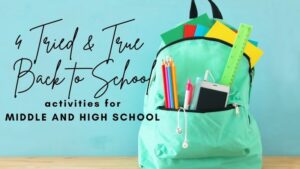
Why Choose These Short Stories for 9th Graders?
Any and all of these 13 short stories for 9th graders will contribute to students’ understanding of good literature and the development of their literacy skills. Whether it’s close reading or finding and using textual evidence or even developing their thinking about character and theme, each of these short stories can help your 9th graders as they start their journey through high school.
You can get your ultimate bundle of all 13 short stories for 9th graders plus 5 more along with tons of activities to engage your students and support their literacy skills by clicking here . Additionally, each story is aligned to the Common Core standards and integrates standardized test preparation with full teacher answers for each and every activity!
And remember just because a story has been done once in class doesn’t mean that students can’t revisit it. Developing literacy skills is key! It’s all about making it fresh.
While the twists of some of the stories might not be new to students, exploring more about character, writing style, and even theme can remain ‘new’ for a lesson twist! Plus, when the story’s plot and its vocabulary are familiar to students, it can mean a shift to focus on something else such as inference, prediction, making connections, and more! This means these 13 short stories for 9th graders can be equally great for 10th-graders, too!
So in the first few days of school, help students (and yourself!) with that first single step on a thousand-mile journey by including short stories for 9th graders in your back-to-school plan!
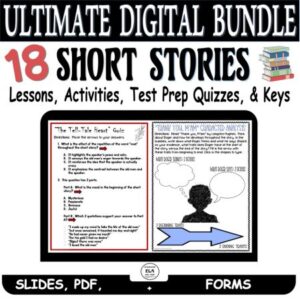
Need more fun lessons and activities that incorporate good literature? Check out my store Kristin Menke-Integrated ELA Test Prep !

Hi, I’m KRISTIN!
I primarily focus on integrating multiple disciplines and subjects. The goal is to make teaching simplified and effective!
Let's Connect
- Follow Follow
Click below to download “13 Simple Strategies to make test prep a breeze!”

An Inspector Calls – Full Mark Essay L9 / A* grade
This is an example of a high grade A* / L9 essay for ‘An Inspector Calls’.
It was completed by myself, not in timed conditions, to set an example for high achieving students, so it is beyond the requirement of a high grade for GCSE. However, students are encouraged to read it and deconstruct it to get ideas for their own essays and structuring – it is also useful in terms of learning how to develop a sophisticated approach to essay phrasing, techniques, and vocabulary. I hope you enjoy reading it and find it helpful!
If you find this page useful you can take a look at our full ‘An Inspector Calls’ course here .
How does Priestley explore the issue of class in An Inspector Calls?
Class is arguably one of the central issues presented in the play, as it is because of her lower-class that Eva Smith is able to be so badly exploited, which leads to her tragic suffering and eventual suicide despite her intelligence, beauty, and kindness. We are exposed to the privileges that upper and middle-class men and women have, as well as the fact that they don’t always realise that they have greater opportunities and stability. As a socialist, Priestley certainly viewed the division between classes as a serious issue in his postwar society; the play ultimately tries to convey his message of social responsibility in order to minimise these rifts between the different classes.
According to Priestley, the upper classes cause issues in society due to their blind privilege. Gerald Croft, for instance, is an aristocrat whom Priestley describes as an ‘easy well-bred young man-about-town’. Priestley depicts Gerald as having an ‘easy’ lifestyle and demeanor due to his privileged social position; as a prominent up and coming businessman whose family are successful business owners, it could be argued that he has been handed his freedom and success without much effort or difficulty. The compound adjective ‘well-bred’ in particular displays Priestley’s socialist beliefs, as it implies that he is aware of yet disagrees with the fact that breeding is highly valued by the postwar British society and perhaps that family connections are more important than a person’s own character or intelligence; Sheila is only engaged to Gerald, after all, because Mr. Birling wants to secure business connections. Gerald’s flagrant exploitation of Eva’s kindness and beauty whilst being engaged to Sheila creates a layer of dramatic irony which criticises the idea that marriage for business purposes or family reasons is ever a positive or viable option. Though it could be argued that Gerald is a more sympathetic character than Sybil, he still demonstrates how the upper classes are so privileged and used to manipulate those around them that they are not even fully conscious of their behaviour. His excuse of continuing the affair with Eva because he felt ‘sorry for her’ could be interpreted as sensitivity, but it is likely that Priestley wanted to show instead how it demonstrates false sympathy, as he was only prepared to help Eva so long as she provided him with the affection that he craved. Additionally, Sybil as another upper-class figure demonstrates a different kind of high-class privilege: under the pretense of being charitable as she works for the ‘Brumley Women’s Charity’, using her prominent position in society to help only those she feels are deserving because they align with her own beliefs and values. She refuses to help Eva because she did not agree with Eva’s ‘elaborate fine feelings … that were simply absurd for a girl in her position’. The alliteration of ‘fine feelings’ emphasises Sybil’s snide superiority in that she is prejudiced towards Eva’s sensitivity and considers herself able to feel and experience more complex emotions than a lower class ‘girl’, a further diminutive term that underscores Sybil’s authoritative position and Eva’s own powerlessness in the situation where she is forced to finally seek charitable help after being thrown into a series of increasingly unfortunate positions. Therefore, whether they are consciously or unconsciously aware of their actions, the upper-class characters in the play are shown to manipulate the lower classes by abusing their privileged position; this demonstrates an inherent hierarchical structure in mid 20th-century British society which Priestley challenges and rejects. As a social realist play, the narrative represents a real-life situation that is familiar and known to the audience, so Priestley’s audience would have been aware of people holding the same values as Sybil and Gerald, looking down on lower classes or feeling like they could just exploit them as they pleased. In this way, Priestley asks his audience to question the fundamental beliefs of his society, by showing that they are not based on kindness and empathy, but instead superiority and oppression.
An Inspector Calls: Character Revision
Although Priestley exposes the problems with the upper classes in the play, he also draws equal attention to the plight of the lower classes. This is primarily shown through the character of Eva Smith, who is arguably less of an individual person and more of an everywoman or symbol for the exploited lower class workers: her name ‘Eva’ is a Biblical allusion to Eve, the first woman created by God in the book of Genesis, and her surname ‘Smith’ is the most common surname in Britain. The symbolism of Eva’s name also shifts as her situation deteriorates; being forced out of work several times, she changes her name to ‘Daisy Renton’, the surname perhaps suggesting the idea of a ‘rent girl’ or prostitute. Interestingly, the Inspector describes Eva as a ‘young woman’; the concrete noun ‘woman’ implies his respect for her regardless of her lower-class position. In contrast, the other characters refer to her using belittling or derogatory language, Sybil calls her a ‘wretched girl’, the adjective ‘wretched’ perhaps implying a double meaning of ‘doomed’ but also ‘repulsive’, once again highlighting Sybil’s upper-class snobbery. Arthur Birling also refers to her patronisingly as a ‘lively good-looking girl’ who ultimately ‘only had herself to blame’. Though the compound adjective ‘good-looking’ could be interpreted as a compliment, the audience feels that it is somewhat off-putting and patronising coming from a character such as Mr. Birling, who is in such a position of authority and privilege as a business owner relative to Eva being a mere worker who is replaceable and expendable in his eyes. The concept of ‘blame’ is pushed increasingly away from the lower classes as the play progresses when the Inspector, acting as a mouthpiece for Priestley’s own socialist views, exposes all of the Birling family and Gerald too to be partially culpable, doing so through the prop of the ‘photograph’ which he shows, in turn, to each family member before exposing their encounters with Eva. The fact that nobody sees the photograph at the same time heightens the dramatic tension of the play, and its importance as a plot device is underscored at the end when Gerald points out that ‘There were probably four or five different girls’, ironically failing to recognise that the statement is irrelevant because it still demonstrates that each family member acted exploitatively towards a lower-class person, even if they were different people in the end. Ultimately the Inspector’s fire-and-brimstone speech where he declares that there are ‘millions and millions of Eva Smiths and John Smiths’ reinforces to Priestley’s audience the irrelevance of whether Eva is an individual or a symbol, as the point remains that the continual exploitation of lower-class workers by upper and middle classes results in mass suffering and oppression.
However, Priestley does not only criticise the upper and middle classes, as his audience is educated and themselves part of those upper levels in society, he instead demonstrates their potential for change. Both Sheila and Eric certainly affect Eva’s life negatively, but crucially they demonstrate an acceptance of those and show remorse as well as a willingness to be more socially conscious in the future. Sheila outwardly admits her faults to the Inspector: ‘I know I’m to blame – and I’m desperately sorry’, causing the audience to sympathise with her and realise that as she was young, she was perhaps merely copying the behaviour of her mother when showing jealousy and cruelty towards Eva in the department store. Eric arguably is one of the worst characters in terms of his effect on Eva’s life; as an alcoholic who likes to get ‘squiffy’, he is shown to be irresponsible and selfish, to the point where he impregnates Eva and then abandons her. Yet he also shows maturity at the end, stating ‘The fact remains, I did what I did’ – the repetition of ‘did’ in the past tense perhaps emphasises that he is now going to change for the better and become a more considerate man rather than a selfish boy. Overall, the younger generation’s willingness to engage with the Inspector’s message is presented as positive, and they symbolically represent Priestley’s hope that future generations will be more kind and considerate towards one another.
Finally, Priestley uses the tensions between classes as a way of promoting his wider anti-capitalist and pro-socialist political stance. As a socialist, he believes that the typical views of a capitalist society where, as Arthur puts it, ‘a man must look after himself and his own’ are outdated and damaging to the population as a whole, because individuals feel no greater sense of responsibility to the wider community. The reflexive pronoun ‘himself’ and the possessive pronoun ‘his’ also underscore the selfishness that Priestley feels is inherent within capitalism, as in his view it encourages an individualist and anti-collectivist mentality that rewards people for selfish behaviour and discourages them from altruistic or compassionate behaviour. Arthur’s views are directly juxtaposed with the Inspector’s own, particularly towards the end of the play when he becomes more forceful with his opinions. He concludes that ‘we are all members of one body’, using the collective pronoun ‘we’ to reflect his universal perspective of being interconnected with all other individuals in society. The metaphor ‘members of one body’ further reinforces his socialist perspective, as it suggests that each individual is connected to a greater whole – perhaps also referencing Priestley’s own Christian beliefs about harmony within communities and taking care of others, particularly those less fortunate than ourselves. Though in modern British society it is common to be equally exposed to both capitalist and socialist perspectives, when the play was written in 1945 the Labour Party – of whom Priestley himself was a prominent member – had just won over the Conservative Party for the first time in history. Therefore, Priestley’s audience themselves were less accustomed to socialist opinions, and many of them continued to uphold the prewar Edwardian and even Victorian attitudes of class separation, rather than wanting to create a progressive society that encouraged equality between classes. By setting the play in 1912 but writing and performing it in 1945, Priestley also uses this time difference to demonstrate that views such as Mr and Mrs Birling’s are outdated in the modern world, encouraging his audience to distance themselves from a capitalistic mentality and instead embrace a more socialist and equalist approach to life. This double setting also allows Priestley to reinforce the absurdness of some of Arthur’s views – for instance, he declares that the Titanic is ‘absolutely unsinkable’; his assertive and confident tone is entirely undermined for Priestley’s audience by the situational irony that the Titanic sank soon after Mr. Birling made that statement. The effect is to demonstrate Mr. Birling’s idiocy as a whole and to deter the audience from believing his capitalist attitudes, as he is clearly so wrong about his other beliefs.
In summary, Priestley treats the issue of class as integral to the plot of ‘An Inspector Calls’. He criticises the upper and middle classes for their lack of awareness of their privileges and their misinformed judgment of the lower classes in an effort to create a harmonious future society where the problems of class difference and class oppression are greatly minimised, or ideally no longer exist. This is demonstrated within a political framework, in which the Inspector’s socialist views are encouraged in the audience, whereas Mr. Birling’s capitalist views are discouraged. Finally, Sheila and Eric, as younger generation characters, exemplify Priestley’s hope for the future as they show the potential to think for themselves and no longer just copy the entrenched values of their parents.
Thanks for reading! If you found this page useful you can take a look at our full ‘An Inspector Calls’ course , as well as ‘ An Inspector Calls: Story Summary ‘, where we break down Act by Act for easier understanding!
Related Posts

The Theme of Morality in To Kill A Mockingbird

Unseen Poetry Exam Practice – Spring

To Kill A Mockingbird Essay Writing – PEE Breakdown

Emily Dickinson A Level Exam Questions

Poem Analysis: Sonnet 116 by William Shakespeare

An Inspector Calls – Official AQA Exam Questions

The Dolls House by Katherine Mansfield: Summary + Analysis

An Occurrence At Owl Creek Bridge: Stories of Ourselves:

How to Get Started with Narrative Writing

Robert Frost’s Life and Poetic Career
© Copyright Scrbbly 2022
- Chess (Gr. 1-4)
- TV (Gr. 1-4)
- Metal Detectors (Gr. 2-6)
- Tetris (Gr. 2-6)
- Seat Belts (Gr. 2-6)
- The Coliseum (Gr. 2-6)
- The Pony Express (Gr. 2-6)
- Wintertime (Gr. 2-6)
- Reading (Gr. 3-7)
- Black Friday (Gr. 3-7)
- Hummingbirds (Gr. 3-7)
- Worst Game Ever? (Gr. 4-8)
- Carnivorous Plants (Gr. 4-8)
- Google (Gr. 4-8)
- Honey Badgers (Gr. 4-8)
- Hyperinflation (Gr. 4-8)
- Koko (Gr. 4-8)
- Mongooses (Gr. 5-9)
- Trampolines (Gr. 5-9)
- Garbage (Gr. 5-9)
- Maginot Line (Gr. 5-9)
- Asian Carp (Gr. 5-9)
- Tale of Two Countries (Gr. 6-10)
- Kevlar (Gr. 7-10)
- Tigers (Gr. 7-11)
- Statue of Liberty (Gr. 8-10)
- Submarines (Gr. 8-12)
- Castles (Gr. 9-13)
- Gutenberg (Gr. 9-13)
- Author's Purpose Practice 1
- Author's Purpose Practice 2
- Author's Purpose Practice 3
- Fact and Opinion Practice 1
- Fact and Opinion Practice 2
- Fact and Opinion Practice 3
- Idioms Practice Test 1
- Idioms Practice Test 2
- Figurative Language Practice 1
- Figurative Language Practice 2
- Figurative Language Practice 3
- Figurative Language Practice 4
- Figurative Language Practice 5
- Figurative Language Practice 6
- Figurative Language Practice 7
- Figurative Language Practice 8
- Figurative Language Practice 9
- Figurative Language of Edgar Allan Poe
- Figurative Language of O. Henry
- Figurative Language of Shakespeare
- Genre Practice 1
- Genre Practice 2
- Genre Practice 3
- Genre Practice 4
- Genre Practice 5
- Genre Practice 6
- Genre Practice 7
- Genre Practice 8
- Genre Practice 9
- Genre Practice 10
- Irony Practice 1
- Irony Practice 2
- Irony Practice 3
- Making Inferences Practice 1
- Making Inferences Practice 2
- Making Inferences Practice 3
- Making Inferences Practice 4
- Making Inferences Practice 5
- Main Idea Practice 1
- Main Idea Practice 2
- Point of View Practice 1
- Point of View Practice 2
- Text Structure Practice 1
- Text Structure Practice 2
- Text Structure Practice 3
- Text Structure Practice 4
- Text Structure Practice 5
- Story Structure Practice 1
- Story Structure Practice 2
- Story Structure Practice 3
- Author's Purpose
- Characterizations
- Context Clues
- Fact and Opinion
- Figurative Language
- Grammar and Language Arts
- Poetic Devices
- Point of View
- Predictions
- Reading Comprehension
- Story Structure
Summarizing
Text structure.
- Character Traits
- Common Core Aligned Unit Plans
- Teacher Point of View
- Teaching Theme
- Patterns of Organization
- Project Ideas
- Reading Activities
- How to Write Narrative Essays
- How to Write Persuasive Essays
- Narrative Essay Assignments
- Narrative Essay Topics
- Persuasive Essay Topics
- Research Paper Topics
- Rubrics for Writing Assignments
- Learn About Sentence Structure
- Grammar Worksheets
- Noun Worksheets
- Parts of Speech Worksheets
- Punctuation Worksheets
- Sentence Structure Worksheets
- Verbs and Gerunds
- Examples of Allitertion
- Examples of Hyperbole
- Examples of Onomatopoeia
- Examples of Metaphor
- Examples of Personification
- Examples of Simile
- Figurative Language Activities
- Figurative Language Examples
- Figurative Language Poems
- Figurative Language Worksheets
- Learn About Figurative Language
- Learn About Poetic Devices
- Idiom Worksheets
- Online Figurative Language Tests
- Onomatopoeia Worksheets
- Personification Worksheets
- Poetic Devices Activities
- Poetic Devices Worksheets
- About This Site
- Privacy Policy
- Terms of Use
- Understanding CCSS Standards
- What's New?
Ereading Worksheets
Free reading worksheets, activities, and lesson plans., site navigation.
- Learn About Author’s Purpose
- Author’s Purpose Quizzes
- Character Types Worksheets and Lessons
- List of Character Traits
- Differentiated Reading Instruction Worksheets and Activities
- Fact and Opinion Worksheets
- Irony Worksheets
- Animal Farm Worksheets
- Literary Conflicts Lesson and Review
- New Home Page Test
- Lord of the Flies Chapter 2 Worksheet
- Lord of the Flies Chapter 5 Worksheet
- Lord of the Flies Chapter 6 Worksheet
- Lord of the Flies Chapter 10 Worksheet
- Narrative of the Life of Frederick Douglass
- Sister Carrie
- The Count of Monte Cristo
- The Odyssey
- The War of the Worlds
- The Wizard of Oz
- Mood Worksheets
- Context Clues Worksheets
- Inferences Worksheets
- Main Idea Worksheets
- Making Predictions Worksheets
- Nonfiction Passages and Functional Texts
- Setting Worksheets
- Summarizing Worksheets and Activities
- Short Stories with Questions
- Story Structure Activities
- Story Structure Worksheets
- Tone Worksheets
- Types of Conflict Worksheets
- Reading Games
- Figurative Language Poems with Questions
- Hyperbole and Understatement Worksheets
- Simile and Metaphor Worksheets
- Simile Worksheets
- Hyperbole Examples
- Metaphor Examples
- Personification Examples
- Simile Examples
- Understatement Examples
- Idiom Worksheets and Tests
- Poetic Devices Worksheets & Activities
- Alliteration Examples
- Allusion Examples
- Onomatopoeia Examples
- Onomatopoeia Worksheets and Activities
- Genre Worksheets
- Genre Activities
- Capitalization Worksheets, Lessons, and Tests
- Contractions Worksheets and Activities
- Double Negative Worksheets
- Homophones & Word Choice Worksheets
- ‘Was’ or ‘Were’
- Simple Subjects & Predicates Worksheets
- Subjects, Predicates, and Objects
- Clauses and Phrases
- Type of Sentences Worksheets
- Sentence Structure Activities
- Comma Worksheets and Activities
- Semicolon Worksheets
- End Mark Worksheets
- Noun Worksheets, Lessons, and Tests
- Verb Worksheets and Activities
- Pronoun Worksheets, Lessons, and Tests
- Adverbs & Adjectives Worksheets, Lessons, & Tests
- Preposition Worksheets and Activities
- Conjunctions Worksheets and Activities
- Interjections Worksheets
- Parts of Speech Activities
- Verb Tense Activities
- Past Tense Worksheets
- Present Tense Worksheets
- Future Tense Worksheets
- Point of View Activities
- Point of View Worksheets
- Teaching Point of View
- Cause and Effect Example Paragraphs
- Chronological Order
- Compare and Contrast
- Order of Importance
- Problem and Solution
- Text Structure Worksheets
- Text Structure Activities
- Essay Writing Rubrics
- Narrative Essay Topics and Story Ideas
- Narrative Essay Worksheets & Writing Assignments
- Persuasive Essay and Speech Topics
- Persuasive Essay Worksheets & Activities
- Writing Narrative Essays and Short Stories
- Writing Persuasive Essays
- All Reading Worksheets
- Understanding Common Core State Standards
- Remote Learning Resources for Covid-19 School Closures
- What’s New?
- Ereading Worksheets | Legacy Versions
- Online Figurative Language Practice
- Online Genre Practice Tests
- Online Point of View Practice Tests
- 62 School Project Ideas
- 2nd Grade Reading Worksheets
- 3rd Grade Reading Worksheets
- 4th Grade Reading Worksheets
- 5th Grade Reading Worksheets
- 6th Grade Reading Worksheets
- 7th Grade Reading Worksheets
- 8th Grade Reading Worksheets
9th Grade Reading Worksheets
- 10th Grade Reading Worksheets
- Membership Billing
- Membership Cancel
- Membership Checkout
- Membership Confirmation
- Membership Invoice
- Membership Levels
- Your Profile
Want Updates?
This page contains all of my reading worksheets that were written at a 9th grade reading level. I used this readability scanner to determine the grade level for these worksheets. I recommend looking two grade levels above and below to increase your range.
- Reading Comprehension Worksheets
Kevlar | Nonfiction Reading Test - Kevlar may be best known for its ability to form clothing that can stop bullets, but its used in a bunch of other products too. Learn more about this miracle fiber and the woman who discovered it in this reading passage. View my readibility scores . Kevlar | Nonfiction Reading Test | RTF Kevlar | Nonfiction Reading Test | PDF Kevlar | Nonfiction Reading Test | Preview Kevlar | Nonfiction Reading Test | Answers Kevlar | Nonfiction Reading Test | Ereading Worksheet
Tigers | Nonfiction Reading Test - Tigers are beautiful, deadly, and vanishing. Learn more about these ferocious felines and answer multiple-choice questions to demonstrate and improve your reading skills. View my readibility scores . Tigers | Nonfiction Reading Test | RTF Tigers | Nonfiction Reading Test | PDF Tigers | Nonfiction Reading Test | Preview Tigers | Nonfiction Reading Test | Answers Tigers | Nonfiction Reading Test | Ereading Worksheet
Idioms Worksheet 5 - This worksheet has another 15 idioms used in context-rich sentences. Students determine the meaning of each idiom based on how it is used. View my readibility scores . Idioms Worksheet 5 | RTF Idioms Worksheet 5 | PDF Idioms Worksheet 5 | Preview Idioms Worksheet 5 | Answers
Poetic Devices Worksheet 3 - This worksheet has 10 snippets taken from classic poems. Each is rich in poetic devices such as alliteration, consonance, onomatopoeia, repetition, rhyme, and rhythm. Students identify which techniques are being used in each question and then explain their answers. View my readibility scores . Poetic Devices Worksheet 3 | RTF Poetic Devices Worksheet 3 | PDF Poetic Devices Worksheet 3 | Preview Poetic Devices Worksheet 3 | Answers
Poetic Devices Worksheet 4 - This worksheet has five pages and 26 examples of poetry packed with rich language. Students determine whether each example is using alliteration, consonance, onomatopoeia, repetition, rhyme, and / or rhythm. View my readibility scores . Poetic Devices Worksheet 4 | RTF Poetic Devices Worksheet 4 | PDF Poetic Devices Worksheet 4 | Preview Poetic Devices Worksheet 4 | Answers
Personification Worksheet 7 - This worksheet features 10 more poetic examples of personification. Students identify what is being personified and then explain the human quality or trait that is given. View my readibility scores . Personification Worksheet 7 | RTF Personification Worksheet 7 | PDF Personification Worksheet 7 | Preview Personification Worksheet 7 | Answers
Genre Worksheet 2 - This genre worksheet has 17 short descriptions of different texts. Students identify the genre and subgenre of each text based on details in the descriptions. Then students explain their answers. View my readibility scores . Genre Worksheet 2 | RTF Genre Worksheet 2 | PDF Genre Worksheet 2 | Preview Genre Worksheet 2 | Answers Genre Worksheet 2 | Ereading Worksheet
Genre Worksheet 4 - This worksheet has 9 problems to help students become genre experts. Students read short descriptions of texts and determine the genre and subgenre based on textual details. Then they explain their answers. View my readibility scores . Genre Worksheet 4 | RTF Genre Worksheet 4 | PDF Genre Worksheet 4 | Preview Genre Worksheet 4 | Answers Genre Worksheet 4 | Ereading Worksheet
Genre Worksheet 8 - This worksheet has 8 more descriptions of texts. Students read the descriptions, identify the genre and subgenre of each text, and then explain their answers. View my readibility scores . Genre Worksheet 8 | RTF Genre Worksheet 8 | PDF Genre Worksheet 8 | Preview Genre Worksheet 8 | Answers Genre Worksheet 8 | Ereading Worksheet
Genre and Author's Purpose Worksheet - This worksheet features descriptions of 9 texts. Students determine the genre, subgenre, and author's purpose of each text based on these descriptions. Then students explain their answers. View my readibility scores . Genre and Author's Purpose Worksheet | RTF Genre and Author's Purpose Worksheet | PDF Genre and Author's Purpose Worksheet | Preview Genre and Author's Purpose Worksheet | Answers
Main Idea Worksheet 1 - This worksheet is great for giving students rapid-fire practice with main idea. It has seven problems. Students read a short passage and write the main idea in a single sentence. They also come up with a title for the passage. View my readibility scores . Main Idea Worksheet 1 | RTF Main Idea Worksheet 1 | PDF Main Idea Worksheet 1 | Preview Main Idea Worksheet 1 | Answers Main Idea Worksheet 1 | Ereading Worksheet
Main Idea Worksheet 2 - This worksheets has six more nonfiction passages. Students read each passage, interpret the main idea, and come up with a title for the passage that expresses the main idea. View my readibility scores . Main Idea Worksheet 2 | RTF Main Idea Worksheet 2 | PDF Main Idea Worksheet 2 | Preview Main Idea Worksheet 2 | Answers Main Idea Worksheet 2 | Ereading Worksheet
Main Idea With Robots Worksheet - This worksheet has six passages related to robots. Students read each passage, interpret the main idea of the text, and think of a title that expresses the main idea of each. View my readibility scores . Main Idea With Robots Worksheet | RTF Main Idea With Robots Worksheet | PDF Main Idea With Robots Worksheet | Preview Main Idea With Robots Worksheet | Answers
Main Idea and Text Structure Worksheet 1 - This worksheet contains 6 paragraphs about everything from rodeo clowns to machine guns. Students write a sentence explaining the main idea of each paragraph, create a title related to the main idea of the passage, and then create and use a graphic organizer to visually represent the structure of the passage. View my readibility scores . Main Idea and Text Structure Worksheet 1 | RTF Main Idea and Text Structure Worksheet 1 | PDF Main Idea and Text Structure Worksheet 1 | Preview Main Idea and Text Structure Worksheet 1 | Answers
Main Idea and Text Structure Worksheet | Amnesia - In this unforgettable worksheet, students read six amnesia-themed passages, explain the main idea of each passage, and create a graphic organizer that visually represent the structure of the text. This is one to remember. View my readibility scores . Main Idea and Text Structure Worksheet | Amnesia | RTF Main Idea and Text Structure Worksheet | Amnesia | PDF Main Idea and Text Structure Worksheet | Amnesia | Preview Main Idea and Text Structure Worksheet | Amnesia | Answers
Summary and Main Idea with Ninjas - Students read four short passages about ninjas. They summarize each paragraph and think of a title that expresses the main idea. View my readibility scores . Summary and Main Idea with Ninjas | RTF Summary and Main Idea with Ninjas | PDF Summary and Main Idea with Ninjas | Preview Summary and Main Idea with Ninjas | Answers
Summarizing Activity about the Lost Colony of Roanoke - Students read a text about the lost colony of Roanoke, the first English colony in America, and summarize each paragraph. There are seven paragraph in this text. View my readibility scores . Summarizing Activity about the Lost Colony of Roanoke | RTF Summarizing Activity about the Lost Colony of Roanoke | PDF Summarizing Activity about the Lost Colony of Roanoke | Preview Summarizing Activity about the Lost Colony of Roanoke | Answers
Text Structure Worksheet | Schooling - This worksheet has 5 paragraphs related to schooling. Students identify the text structure of each and place information from the passages into appropriate graphic organizers. View my readibility scores . Text Structure Worksheet | Schooling | RTF Text Structure Worksheet | Schooling | PDF Text Structure Worksheet | Schooling | Preview Text Structure Worksheet | Schooling | Answers
Text Structure Worksheet | The Revolutionary War - Students read 5 paragraphs about the American Revolutionary War. Students determine the text structure of each passage. Then they create and use graphic organizers to represent important information from each paragraph. View my readibility scores . Text Structure Worksheet | The Revolutionary War | RTF Text Structure Worksheet | The Revolutionary War | PDF Text Structure Worksheet | The Revolutionary War | Preview Text Structure Worksheet | The Revolutionary War | Answers
Those were the worksheets that I have written at or around the 9th grade reading level. I loved working with 9th grade students and I hope that you do too. If these worksheets and activities have helped you, then please tell me about it in the comments. I appreciate any stories, corrections, or feedback that you have to offer. Your words inspire me and make this website richer.
Still looking for something? Search here.
Click One of the Topics to Browse
All Reading Worksheets and Activities Author's Purpose Worksheets and Activities Characterization Worksheets and Activities Character Types Worksheets and Lessons Context Clues Worksheets Conflict Types Worksheets Differentiated Reading Instruction Worksheets and Activities Fact and Opinion Worksheets and Activities Functional and Nonfiction Comprehension Worksheets Activities Genre Activities Genre Worksheets Inferences Worksheets and Activities Irony Worksheets and Activities Literature Units Main Idea Worksheets and Activities Making Predictions Worksheets Point of View Activities Point of View Worksheets Reading Comprehension Worksheets Summary Worksheets and Activities Story Structure Worksheets Story Structure Activities Text Structure Activities Text Structure Worksheets Theme Worksheets and Activities
Online Reading Activities: Complete on phones, tablets, or computers. Print, save, or email results as a PDF.
Chess | Nonfiction Reading Test (Gr. 1-4) TV | Nonfiction Reading Test (Gr. 1-4) Metal Detectors | Nonfiction Reading Test (Gr. 2-6) Tetris | Nonfiction Reading Test (Gr. 2-6) Seat Belts | Nonfiction Reading Test (Gr. 2-6) The Coliseum | Nonfiction Reading Test (Gr. 2-6) The Pony Express | Nonfiction Reading Test (Gr. 2-6) Wintertime | Nonfiction Reading Test (Gr. 2-6) Reading | Nonfiction Reading Test (Gr. 3-7) Black Friday | Nonfiction Reading Test (Gr. 3-7) Hummingbirds | Nonfiction Reading Test (Gr. 3-7) Worst Game Ever? | Nonfiction Reading Test (Gr. 4-8) Carnivorous Plants | Nonfiction Reading Test (Gr. 4-8) Google | Nonfiction Reading Test (Gr. 4-8) Honey Badgers | Nonfiction Reading Test (Gr. 4-8) Hyperinflation | Nonfiction Reading Test (Gr. 4-8) Koko | Nonfiction Reading Test Ereading Worksheet (Gr. 4-8) Mongooses | Nonfiction Reading Test (Gr. 5-9) Trampolines | Nonfiction Reading Test (Gr. 5-9) Garbage | Nonfiction Reading Test (Gr. 5-9) Maginot Line | Nonfiction Reading Test Ereading Worksheet (Gr. 5-9) Asian Carp | Nonfiction Reading Test Ereading Worksheet (Gr. 5-9) A Tale of Two Countries | Nonfiction Reading Test (Gr. 6-10) Kevlar | Nonfiction Reading Test (Gr. 7-10) Tigers | Nonfiction Reading Test (Gr. 7-11) Statue of Liberty | Nonfiction Reading Test (Gr. 8-10) Submarines | Nonfiction Reading Test (Gr. 8-12) Castles | Nonfiction Reading Test (Gr. 9-13) Gutenberg | Nonfiction Reading Test (Gr. 9-13) Author's Purpose Practice 1 Author's Purpose Practice 2 Author's Purpose Practice 3 Author's Purpose Practice 4 Author's Purpose Practice 5 Author's Purpose Practice 6 Fact and Opinion Practice 1 Fact and Opinion Practice 2 Fact and Opinion Practice 3 Idioms Practice Test 1 With Long Responses Idioms Practice Test 2 With Long Responses Figurative Language Practice 1 Figurative Language Practice 1 With Long Responses Figurative Language Practice 2 Figurative Language Practice 2 With Long Responses Figurative Language Practice 3 Figurative Language Practice 3 With Long Responses Figurative Language Practice 4 With Long Responses Figurative Language Practice 5 With Long Responses Figurative Language Practice 6 With Long Responses Figurative Language Practice 7 With Long Responses Figurative Language Practice 8 With Long Responses Figurative Language Practice 9 With Long Responses Figurative Language Practice | Edgar Allan Poe Figurative Language Practice | Edgar Allan Poe With Long Responses Figurative Language Practice | O. Henry Figurative Language Practice | O. Henry With Long Responses Figurative Language Practice | Shakespeare Genre and Subgenre Practice 1 Genre and Subgenre Practice 2 Genre and Subgenre Practice 3 Genre and Subgenre Practice 4 View More Genre and Subgenre Practice Tests Irony Practice 1 Irony Practice 2 Irony Practice 3 Making Inferences Practice 2 Main Idea Practice 1 Main Idea Practice 2 Point of View Practice 1 | Multiple Choice Only Point of View Practice 1 | With Long Responses Point of View Practice 2 | Multiple Choice Only Point of View Practice 2 | With Long Responses Text Structure Practice 1 Text Structure Practice 2 Text Structure Practice 3 Text Structure Practice 4 Text Structure Practice 5 Story Structure Practice 1
Examples of Alliteration Examples of Figurative Language Examples of Hyperbole Examples of Metaphor Examples of Onomatopoeia Examples of Personification Examples of Simile Figurative Language Activities Figurative Language Poems With Questions Figurative Language Worksheets Idiom Worksheets Onomatopoeia Worksheets and Activities Personification Worksheets Poetic Devices Activities Poetic Devices Worksheets
Adverbs and Adjectives Worksheets and Activities Capitalization Worksheets and Activities Comma Worksheets and Activities Contractions Worksheets and Activities End Mark Worksheets Grammar Worksheets Homograph, Homonym, and Homophone Worksheets and Activities Noun Worksheets Parts of Speech Activities Parts of Speech Worksheets Prepositions Worksheets and Activities Pronoun Worksheets and Activities Punctuation Worksheets and Activities Semicolon Worksheets Sentence Structure Activities Sentence Structure Worksheets Verb Tense Activities Verb Tense Worksheets Verb Worksheets and Activities Was and Were Worksheets and Activities
Essay Writing Rubrics Narrative Essay Assignments Narrative Essay Topics and Story Ideas How to Write Narrative Essays and Short Stories Persuasive Essay and Speech Topics Persuasive Essay Worksheets Research Paper Topics Writing Persuasive Essays
Author's Purpose Figurative Language How to Identify Figurative Language Techniques Ideas for Projects List of Character Traits Literary Genres and Subgenres Poetic Devices Point of View Sentence Structure Story Structure Teaching Point of View Teaching Theme Text Structure Text Structure | Patterns of Organization Understanding Common Core State Standards Units and Lesson Plans Aligned With Common Core State Standards
About Me About This Site Contact Major Updates to the Site Terms of Use
11 Comments
Very effective material
I find these worksheets effective. I focus on atleast one story per week to teach my kids correct reading skills and these worksheets has done wonders. My students confidence have risen tremendously.
These are all great! Thank you so much for these resources; how can we give you credit if we use any? 🙂
If you would like to do that, you can just link to my website or cite my authorship: Donald E. Morton.
Best wishes!
WOW… thank you for sharing your awesome worksheets….they are brilliant for my year 9 boy who I tutor once a week. He only reads when I am with him and I am sure these easy to follow worksheets will help him. again thank you…
Maaz Abobaker
I find these comprehensions effective
The materials are what it says, very effective for practices
I find the materials effective
Maria Belen Valendo Ragaza
Congrats EReading..this is significant for my learner’s and me.
Leave a Reply Cancel reply
Your email address will not be published. Required fields are marked *
Subscribe Now
Popular content.
- Author's Purpose Worksheets
- Characterization Worksheets
- Common Core Lesson and Unit Plans
- Online Reading Practice Tests
- Plot Worksheets
- Summary Worksheets
- Theme Worksheets
New and Updated Pages
- Capitalization Worksheets
- Contractions Worksheets
- Double Negatives Worksheets
- Homophones & Word Choice Worksheets
BECOME A MEMBER!

IMAGES
VIDEO
COMMENTS
2. 4. Share. Getting a grade 9 is not intellectually difficult. (There are dozens of grade 9 ideas in my guide, and multiple essays). Every year, dozens of students who were getting grades 4, 5 and 6 in their mocks write to me to say they got a grade 9 in the real exam. We might think that it is only grade 7 and 8 students who would get to a 9.
32 Writing Prompts for 9th Grade: First Year of High School Journaling Ideas (that can double as Essay Topics) + a Bonus List of 9 Quick, Easy Writing Ideas.Enjoy! The first year of high school is one of the most significant times in a teenager's life. As students face new responsibilities and enjoy all new freedoms and privileges, they begin to renegotiate their personal identities and come ...
122 W. 25th St., Ste. E200 | Cheyenne, WY 82002 P: 307-777-7675 | F: 307-777-6234 | edu.wyoming.gov. The WY-TOPP ELA test has a Writing portion for grades 3, 5, 7, and 9. Each writing test contains one or more passages that relate to a prompt. Students are required to read passages associated with a topic, and then write a response based on a ...
Simple Yet Important Lesson. Regular journal writing is one of the absolute best ways for teenagers to sort through their experiences, learn critical thinking, and begin making better decisions. As your ninth graders write about topics like privileges and rights, peer pressure, daily life, and their greatest fears, they will start forming brand ...
Practicing now will allow her to learn how to develop ideas, use rhetorical devices, and learn language nuances. Check out How to Write an Impressive College Essay: A Step-by-Step Guide for tips on crafting a stellar essay. Your student will also learn how to "speak" to her audience, avoid cliches, and write according to her audience's needs.
Essay scores are produced for the following grade ranges: 3-4, 5-6, 7-8, 9-10, and 11-12. Thus a ninth grade essay is compared to models for both ninth and tenth grades. Prompt for Essays 1-2: Scientists discover potential new cures for disease every day. When they are developing medicines, they need to have some way to test whether or not the ...
Grade 9 Level 5 Writing Sample. Global warming has become a serious threat to our planet. Explain what we can do as citizens to reduce the effects of global warming. You may want to consider factors, such as: recycling. the impact of fossil fuels (oil, gas and coal) the impact of consumerism (buying things). View full size.
This is an extract from my Ultimate Guide to A Christmas Carol (which also includes 7 grade 9 essays).. I wrote it to help you love the novel, get grade 9 and understand and enjoy literature so that you could choose English literature A level (if you wanted to - some people have to become doctors and chemists, but 100X more will want to read and write for the rest of their lives!)
This collection of grade-level writing samples provides teachers of English Language Learners with examples of student writing at each proficiency level. Teachers can use these interactive examples to build their understanding of the different writing competencies and levels within the Benchmarks. Select a writing sample below.
These tips can help your students complete their best possible descriptive essay: Tip #1 — Encourage your students to brainstorm the topics and ideas that they are passionate about. When they relate to what they are writing about, the words will come more naturally. Tip #2 — Tell your students to pick a topic and get organized before they ...
A range of example B-A* / L7-L9 grade essays, both at GCSE (ages 14-16) and A-Level (age 16+) with teacher comments and mark scheme feedback; A bonus Macbeth workbook designed to guide you through each scene of the play! For more help with Macbeth and Tragedy, read our article here.
RISTAU: #ENGLISH ROCKS! "Changing with the Times": The Persuasive Essay. Persuasive writing, also known as the argument essay, utilizes logic and reason to show that one idea is more legitimate than another idea. It attempts to persuade a reader to adopt a certain point of view or to take a particular action. The argument must always use sound ...
ClassX's AI Essay Grader empowers teachers by automating the grading process without compromising on accuracy or fairness. The concept is elegantly simple: teachers input or copy the students' essays into the provided text box, select the appropriate grade level and subject, and ClassX's AI Essay Grader takes it from there.
Level 3: Edits sentences for placement of apostrophes (there's, it's), quotation marks (no evidence) , a ... This collection of grade-level writing samples provides teachers of English Language Learners with examples of student writing at each proficiency level. Teachers can use these interactive examples to build their understanding of the ...
The conclusion is the last chance you will have to sway your readers. This free printable worksheet is perfect for students to practice writing conclusions. Grade Levels: 9th - 12th Grade, Grades K-12. CCSS Code (s): W.9-10.1.E, W.11-12.1.E. Free, printable ELA Common Core Standards Worksheets for 9th and 10th grade writing skills.
2 Grade 9 Creative Writing Examples. I recently asked my year 11s to pen a piece of description and/or narrative writing for their mini assessment. I gave them the following prompts: Your school wants you to contribute to a collection of creative writing. EITHER: Write a short story as suggested by this picture:
An Inspector Calls: A* / L9 Example Intro + Paragraph. Here are some samples of an essay on An Inspector Calls, on the theme of responsibility. I wrote these myself as a teacher to show students an example of the standard required to get a high level at GCSE. I've also broken down the structure below so you can see what to put into each ...
Grade 9 Essay: How does Shakespeare present the theme of ambition in the play? ... In order to get into level 6 the student should explore more of Shakespeare's ideas. Next Steps. ... Paid subscribers get a grade 9 exam answer every week, with examiner comments. There are over 40 already published, to which paid subscribers get full access.
Get inspired with great narratives and Class 9 Essay Topics. Avail the Grade Specific Essay Writing Topics curated belonging to different categories. Bring up the Creative Mind and Imagination in you by referring to the 9th Standard Essay Topics. Enhance your Vocabulary with the Grade 9 Essay Writing Topics & Ideas and express your thoughts […]
In the exposition of the play, Macbeth and Lady Macbeth initially appear immensely strong within their marriage, with Macbeth describing his wife as 'my dearest partner of greatness' in act 1 scene 5. The emotive superlative adjective 'dearest' is a term of endearment, and acts as a clear depiction of how valued Lady Macbeth is by her ...
The Monkey's Paw - This story is best summarized as be careful what you wish for! The protagonist of W. W. Jacobs' horror story is granted three wishes, but when he messes with fate, things go very, very wrong. Use this story to focus on summaries, particularly 1-sentence summaries, before diving into characterization.
This is an example of a high grade A* / L9 essay for 'An Inspector Calls'. It was completed by myself, not in timed conditions, to set an example for high achieving students, so it is beyond the requirement of a high grade for GCSE. However, students are encouraged to read it and deconstruct it to get ideas for their own essays and ...
This page contains all of my reading worksheets that were written at a 9th grade reading level. I used this readability scanner to determine the grade level for these worksheets. I recommend looking two grade levels above and below to increase your range. Only Include Worksheets Written at the 9th Grade Level Not Recommended.